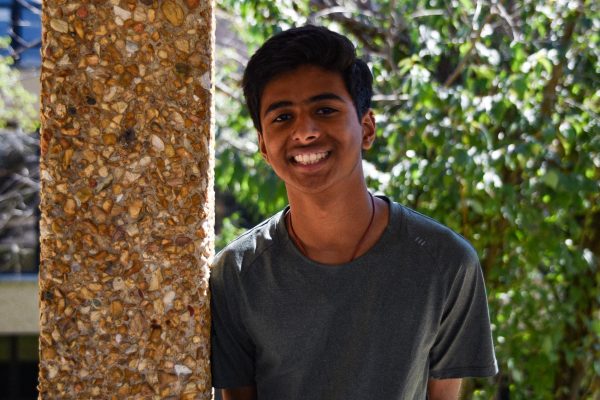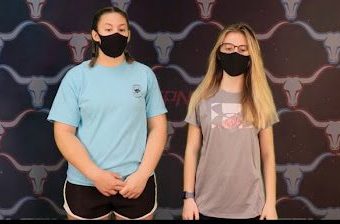
Living in a world of silence is the common reality for those suffering from hearing impairment. According to the CDC, as many as 15% of school-age children have significant hearing loss in at least one ear. Students who are deaf or hard of hearing (DHH) face challenges in the classroom and in the extracurricular world. 
Sophomore Katelynn Meyer has been in the DHH program since the age of four. Meyer was profoundly deaf at birth and unable to hear any sound for the first two years of her life. 
‚ÄúI have been in the DHH program for my whole life. I went to Ladue Early Childhood Center for my preschool. This is where I met a lot of my close friends, lifetime friends and supporting adults. Then I attended Bellerive Elementary followed by West Middle,‚ÄĚ Meyer said. ‚ÄúBeing in one school system not only helped me make great friends but also helped me to explore several resources offered at the schools.‚ÄĚ
Due to her profound deafness, Meyer did not have luck with the hearing aids she tried for the first few years of her life. She then went on to get cochlear implants, which help her hear sounds, but not understand words. Meyer relies on software, such as the Video Relay Service (VRS), where one can call an interpreter on screen to interpret what the hearing person says. Additionally, she uses AVA app, which is an artificial-intelligence based translation app that captions what the speaker says.
‚ÄúI communicate with others in American Sign Language (ASL). At school I get access to a Sign Language interpreter. When the teacher is teaching, I am able to learn by looking at the interpreter who is translating and signing what the teacher is saying into my language,‚Äú Meyer said. ‚ÄúAt home my mom is the only one that knows ASL. My dad and my sister do not use ASL. I have to depend on my mom to communicate with them and she is the only one that truly understands me and what I am saying.¬† It feels like I have never had a one on one conversation with my dad or my sister. It is very sad but it is very common for deaf kids to have this happen.‚ÄĚ
One of the biggest challenges Meyer says she faces is communicating and making connections with other people. Myers has a lot of friends who already know or are learning ASL. Additionally they use VRS, texting and Facetime to communicate with each other when at home.
‚ÄúAt school we use a lot of sign language with friends. If I try to lip read in a conversation I get lost and confused. I feel left out when that happens. I use this when I am with my hearing friends,‚ÄĚ Meyer said. ‚ÄúI hang out more with my friends who are deaf because they know our culture and language. My deaf friends and I do not have to worry about communication barriers. Throughout my schooling, my friends have been students in the DHH program that I met at preschool and they are the same students I am going to graduate high school with. My deaf friends and I are really close to each other; we know what is going on in each other’s life and when we‚Äôre having hard times. It is like a close-knit family where we can talk about anything with each other. Those friends are for a lifetime.‚Ä̬†
According to Meyer, she can communicate with both hearing and non hearing peers through some social media platforms. However, on many social media there is no access for those with hearing impairment. For instance, on Tik Tok and YouTube, there are a lot of videos that do not have closed captions. Additionally videos that use the auto closed captions options are not accurate translations majority of the time.‚Ä̬†
‚ÄúIt is annoying to see the video and not be able to get the message like the hearing people,‚ÄĚ Meyer said. ‚ÄúPeople can be talking, smiling, looking upset or excited [in the video] but you don’t know why or what it is all about and you cannot be a part of those emotions and experiences.‚ÄĚ
Similarly, noisy environments such as classrooms, hallways, lunch rooms and football games make it even more difficult to understand other people, according to Meyer. Meyer prefers to communicate in ASL while talking one-on-one with people in the classroom. However, the situation in group discussions is different.
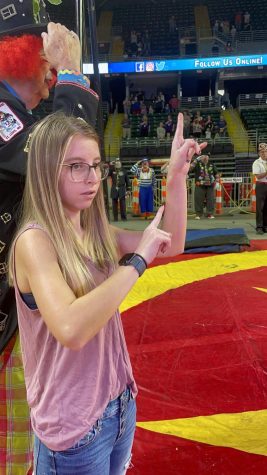
‚ÄúIn a general education classroom, [participation and working in small groups] is harder because I am trying to keep up with what everyone is talking about [despite] the background noise. It feels stressful to be in a group activity with hearing people and it does give me more anxiety. I do rely on my interpreter a lot in that setting,‚ÄĚ Meyer said. ‚ÄúBut in the DHH room, that is not an issue because everyone can understand what we are saying to each other.‚ÄĚ
 Meyer suggests that students working in a group [involving a DHH student] can sit in a circle to make sure the hearing impaired student can view the interpreter, keep the noise level low and talk slowly and clearly. Additionally while making videos meant for the whole class or the entire school, students must include closed captions or interpreters so that DHH students can understand their content.
‚ÄúWithout closed captions or an interpreter they [the videos] will mean nothing to us. We prefer closed captions over an interpreter in the corner because we can see the captions and the video at the same time. Think [of it like] the video [having] no sound, and how do you understand the video? That is what deaf people can hear,‚ÄĚ Meyer said.
Meyer also attributes her success in the classroom to advocating and asking for help from teachers and case managers when needed. Additionally, she is involved in several extracurricular and after-school activities, including the ASL club and LSPN.
‚ÄúThe reason I joined the ASL club is to be able to have a place other than the DHH room to be able to communicate with my hearing peers. This [reason] also inspired me to join LSPN,‚ÄĚ Meyer said. ‚ÄúIt started with me taking a broadcasting class last school year. I remember when [theatre teacher Amy] Gosset talked about LSPN, I instantly wanted to do it and I knew that was my passion.‚ÄĚ
Meyer was the Vice President of the ASL club during her freshman year and became the first DHH student to be elected for a leadership position in ASL Club.
‚ÄúI feel like that [a DHH student leading the ASL club] is how it should be because the club is about American Sign Language and deaf culture and that is the deaf person‚Äôs native language,‚ÄĚ Meyer said. ‚ÄúAs the leader I talk to the group and see what their idea and vision for this club is and then take that into consideration. Then I look at what everyone’s ASL level is and do a lot of fun activities. But the most important key to success is to make sure everyone is involved, learning, asking and making friends in this club.‚Ä̬†
As the Vice President, Meyer’s goal was to make the ASL club a safe place for DHH students to be able to communicate with their hearing peers. But this is not the only club that Meyer is a part of.
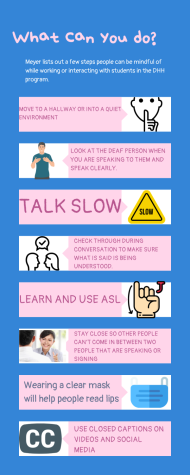
‚ÄúWith LSPN I want to be able to show that [being able to hear or being] deaf does not matter; everyone is included and anyone can make friends and have fun with it,‚ÄĚ Meyer said. ‚ÄúI am so thankful for the support from the DHH program with the two clubs I am involved with. The interpreters and DHH teachers love that I am the leader of a club.‚Ä̬†
  To further explore her passion and skills, and to expand her community, Meyer also participated in several sports growing up and continues to do so today. Her first sport was dance, followed by gymnastics for 10 years and cheerleading for five years. Currently, she is involved in archery and rock climbing. 
‚ÄúI started shooting arrows in sixth grade at West Middle. I now do rock climbing and archery through the Disabled Athlete Sports Association (DASA) where I can play and have fun with other players like me,‚ÄĚ Meyer said.
After graduation, Meyer is planning on attending Gallaudet University or Rochester Institute of Technology to get a degree in broadcasting or science. Gallaudet is the only university in the world where students live and learn using ASL and English. 
‚ÄúFor my future, I am hopeful that people are more open to communication and willing to hire people with hearing impairments at work,‚ÄĚ Meyer said. ‚ÄúI feel the school experience I am going through is going to help me be able to go to college better because I know the workload of homework, how to adjust to new changes, ways to communicate with hearing peers and find a strong place both in class and activities outside of [the] classroom.‚Ä̬†


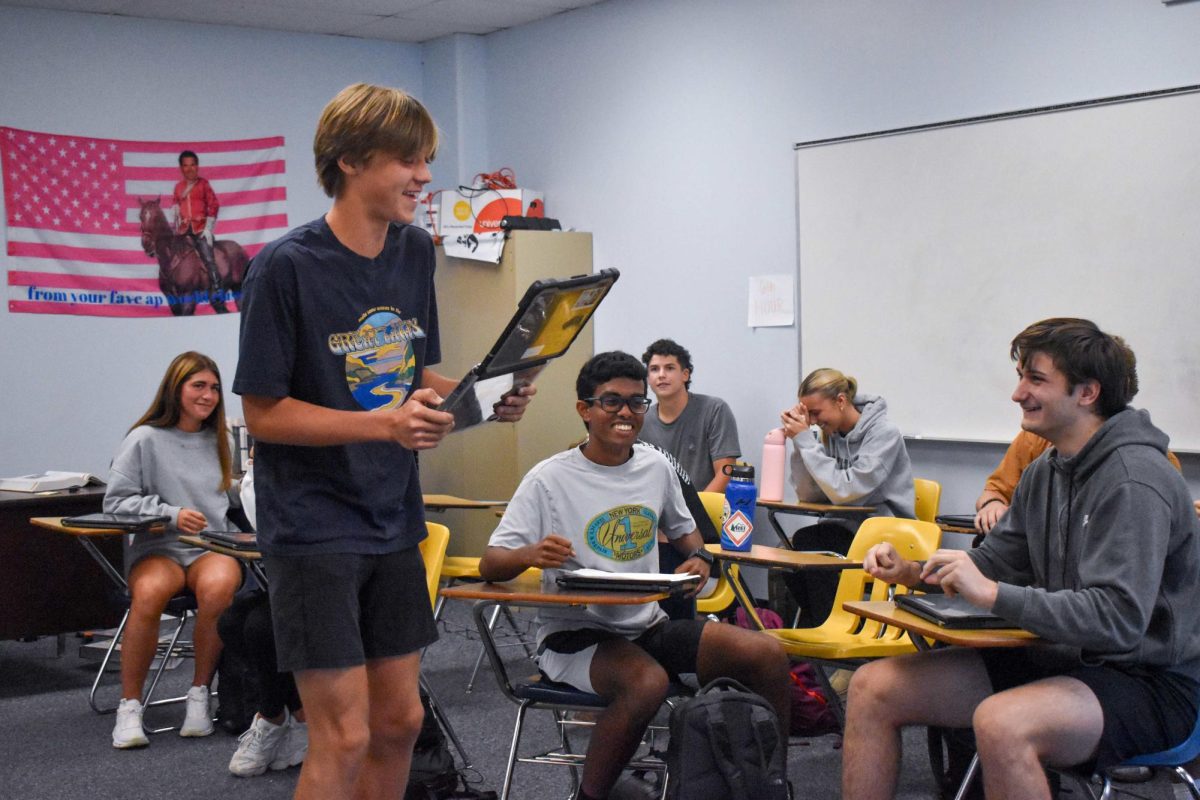
![Freshman Daphne Stokes looks at a table with Veterans Day flyers and information on Nov. 11. Stokes, along with other West High students, like senior Alexander Lewinski, passed by the table in the cafeteria with army recruitment information and giveaways for students to observe during lunch. ‚ÄúTalking with [the recruiters] has definitely helped me [find] where I wanted to go, more than anything else,‚ÄĚ Lewinski said.](https://pwestpathfinder.com/wp-content/uploads/2025/11/DSC_1227-2-1200x800.jpg)
![Helping a customer, print room assistant Gretchen Williams operates her booth at the West High Craft Fair from Oct. 25-26. This was Williams‚Äô first time participating in the Craft Fair with her new craft shop, Gs Beaded Boutique. ‚ÄúPeople have always said, over the years, ‚Äėyou should open something.‚Äô [I replied that] I would rather just make [my crafts as] gifts for people. I just started [the online store] up, and it's been okay. I'm always surprised [by] how many views I get and [the] people from different states buying things; somebody from Alaska bought something the other day.‚ÄĚ](https://pwestpathfinder.com/wp-content/uploads/2025/11/DSC0451-2-1200x799.jpg)
![Gesturing toward the club‚Äôs name on the board, Global Youth Aid co-president year Daniah Alsagheer discusses upcoming service projects with members during a meeting on Oct. 30. ‚ÄúWe might be one club at one school, but together, we‚Äôre [part of] something much bigger,‚ÄĚ Alsagheer said.](https://pwestpathfinder.com/wp-content/uploads/2025/11/DSC00949-1200x800.jpg)
![Focused on providing exceptional service, sophomore Darsh Mahapatra carefully cleans the door of a customer‚Äôs car. Mahapatra has always believed his customers deserve nothing less than the best. ‚Äú[If] they‚Äôre trusting us with their car and our service, then I am convinced that they deserve our 100 percent effort and beyond,‚ÄĚ Mahapatra said.](https://pwestpathfinder.com/wp-content/uploads/2025/10/DSC_0018-1200x800.jpg)
![Sophomore Aleix Pi de Cabanyes Navarro (left) finishes up a soccer game while junior Ava Muench (right) warms up for cross country practice. The two came to Parkway West High School as exchange students for the 2025-2026 school year. ‚ÄúThe goal for the [exchange] program is to provide opportunities for both Parkway students and our international exchange students to learn about other cultures, build connections and become confident, capable, curious and caring ‚ÄĒ Parkway‚Äôs Four C‚Äôs ‚ÄĒ in the process,‚ÄĚ Exchange Program Lead Lauren Farrelly said.](https://pwestpathfinder.com/wp-content/uploads/2025/10/Feature-Photo-1200x800.png)
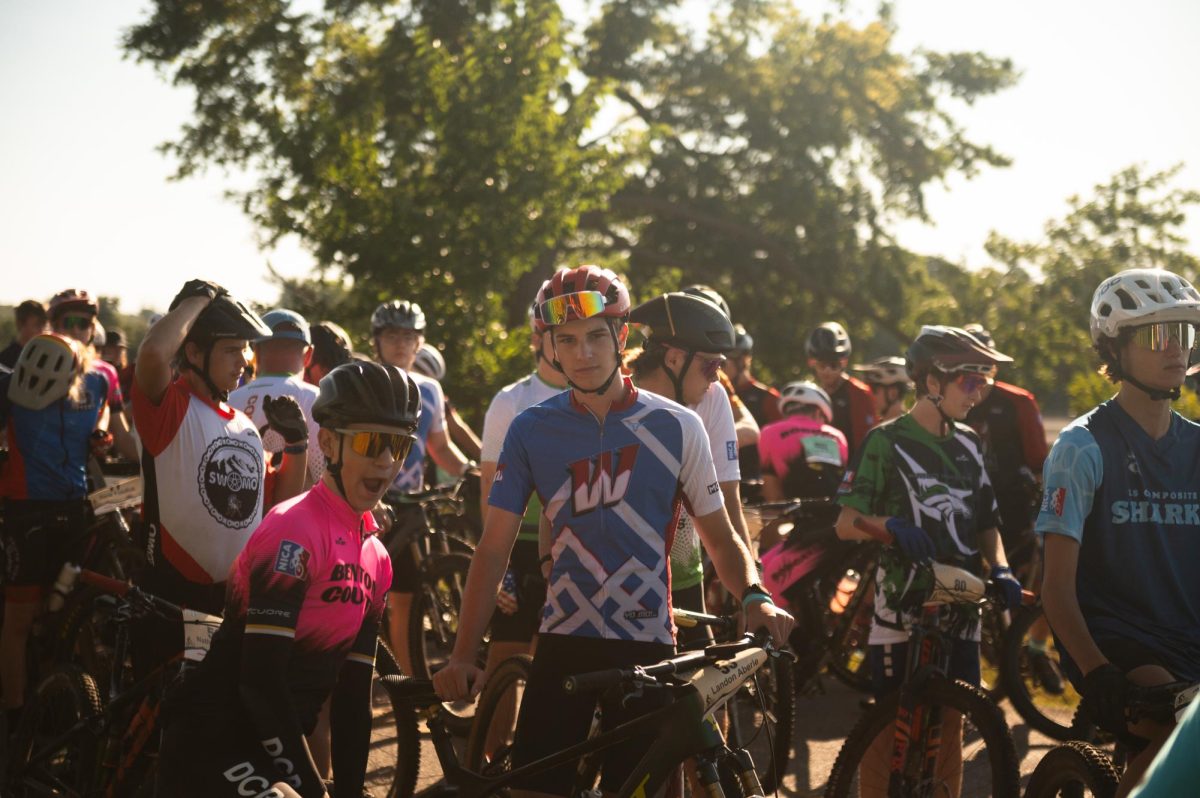
![Gazing across the stage, sophomore Alexis Monteleone performs in the school theater. The Monteleone family‚Äôs band ‚ÄúMonte and the Machine‚ÄĚ has been releasing music since 2012, but Alexis started her own solo career in 2024 with the release of her first single, Crying Skies. ‚ÄúMy whole family is very musical, [and I especially] love writing [songs with them],‚ÄĚ Monteleone said.](https://pwestpathfinder.com/wp-content/uploads/2025/09/DSC7463-1200x798.jpg)
![Amid teaching a lesson to her AP Calculus BC class, Kristin Judd jokes alongside her students in their funny remarks. Judd has always enjoyed keeping the mood light in her classroom, along with on the volleyball court. ‚Äú[I enjoy] that side talk where you see [or] overhear a conversation and chime in, or somebody says something funny,‚ÄĚ Judd said.](https://pwestpathfinder.com/wp-content/uploads/2025/09/image-1200x730.jpg)
![Eyeing the ball, junior Ella McNeal poses for her commitment pictures at Clemson University. McNeal‚Äôs commitment comes after months of contact with top Division 1 soccer programs. ‚Äú It has taken a lot to get to where I am, but I know that [what] I've already been through is just the beginning, and I can't wait for what is to come,‚ÄĚ McNeal said.](https://pwestpathfinder.com/wp-content/uploads/2025/09/IMG_4926-1200x900.jpeg)
